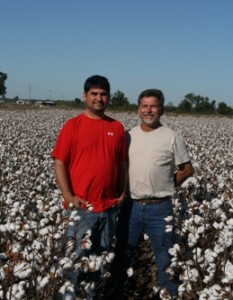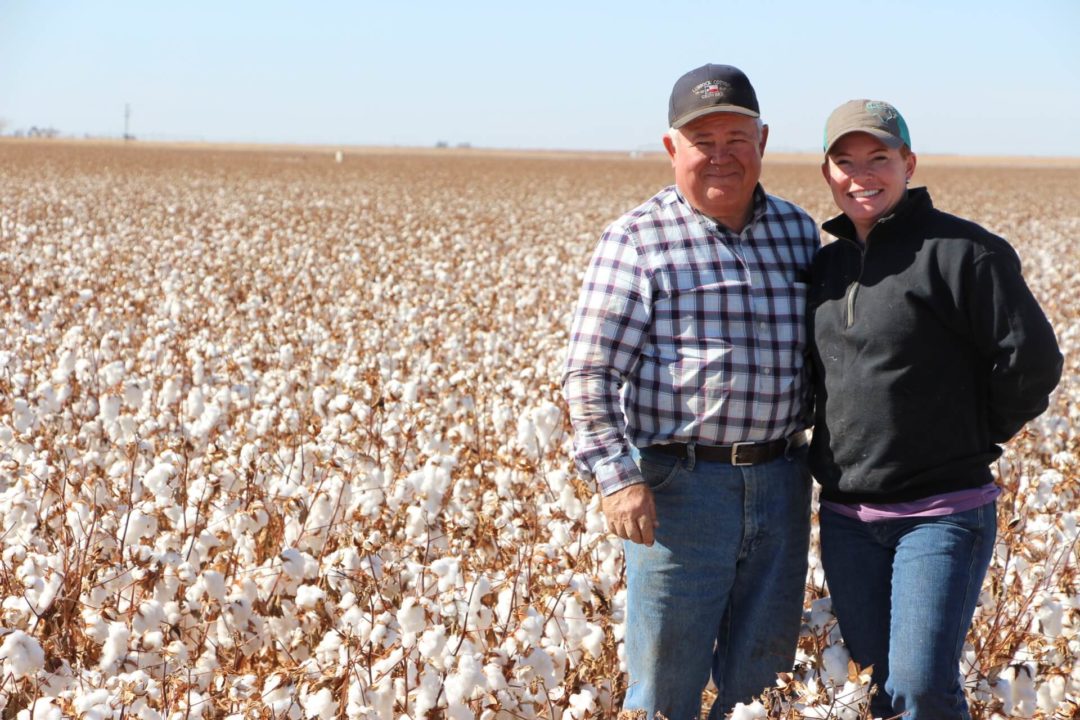Staying with Cotton

With the price of cotton rivaling the surge in the spring of 2008, many growers are planning to aggressively expand acres in 2011. But Dennis and his son Justin Gathright won’t have the opportunity to plant more cotton on their 3,400 acres near Monette, AR, along the St. Francis River.
But that’s not necessarily a bad thing.
“We never got out of cotton,” Justin Gathright says. “We’re fortunate to have cotton ground that’s high-yielding and we’re cotton farmers. We go through the good times and the bad times with it. We’re geared for cotton and all we have is cotton equipment.
“We didn’t feel the need go out and spend a lot of extra money to try to raise a grain crop, and now I’m glad we didn’t make a switch because the price of cotton is coming back. My dad grew some grain back in the ‘70s when prices were high, and then two or three years later they were nothing. He regretted doing it and that kind of sticks in the back of his mind.”
But there’s no denying that life in the cotton business for the past three years has been anything but easy. “When prices were down, we tried to overcome it by increasing yields and struggle through,” says Gathright. “The market being down didn’t allow us to update equipment like we wanted to.”
With picking behind him due to almost perfect harvest conditions, Gathright believes he’ll hit the yields he needs. “I’d say we’ll wind up with around 400 or 500 pounds more (per acre) than last year, which will be a good, solid average for us,” he says. “And that’s awesome, because last year was bad because of the weather.”
The Gathrights plant 3,000 of their acres in Stoneville’s ST 5458B2RF and 400 in ST 4288B2RF. ST 5458 is a new medium-maturing variety that has shown root-knot nematode tolerance. ST 4288 is an early to medium-maturing variety. They also participate in Bayer CropScience’s Cotton Agronomic Performance (CAP) on-farm evaluation trials.
It’s a Pig
While Palmer amaranth may have started in Georgia, it has firmly established itself in Arkansas and parts of the north Mississippi Delta, and is quickly getting out of hand in some fields.
“We do have some pigweed resistance, and we were fortunate enough this year to keep it at bay,” Gathright says. “But we know pigweeds are going to get worse year after year if we don’t do something about them.”
They begin at burndown with a tank-mix of Roundup and Loveland’s dicamba herbicide product Rifle. “Ideally that would come around the 10th of March because you never know what the weather around here is going to do and when you’ll be able to start,” Gathright says. “But as soon as the weather is pretty and the weeds are actively growing, we try to start so we can be done in a timely manner — hopefully by the first of April.”
At planting they incorporate Treflan with a do-all, followed by two post-directed applications of Roundup, followed by two applications of Dual with hooded sprayers. “We got the hoods back out this year,” says Gathright. “We treat every acre the same.”
At planting, they also use Temik, and if necessary, Baythroid for cutworms.
“Temik has been good to us, and I hate to see it go away,” says Gathright.
Temik is an insecticide/nematicide from Bayer.
In a statement, Bayer said it is “cooperating with the Environmental Protection Agency (EPA) following the announcement to cancel uses of aldicarb on potatoes and citrus. Uses on all other crops will remain, but will be phased out over the next few years. Nematodes are the number one yield-robbing disease in cotton. Because Temik is the most widely used nematicide in cotton today, growers have been concerned by the recent announcement of a scheduled phase-out of all registered uses of Temik by 2018.”
Like most of the Delta, plant bugs have been the most consistently damaging pest, and 2010 was no exception. “We have to spray every week with anything that will kill a plant bug,” Gathright says. “We spray one chemical one week, then the next, we’ll use a different chemistry. The only difference this year was that they started a little later. But we didn’t have to spray for anything else.”
Despite the effectiveness of every crop-production product and every decision he makes, there’s one thing that determines whether they’ll end up being successful — irrigation.
“We made a big crop this year, and we made a big crop in 2007, and it was hot and dry then, too,” Gathright says. “But you cannot make it without irrigation. Everything that we make I attribute to irrigation. There are still some dryland acres around here — and I have a few of them — but you just can’t make it without irrigation. Irrigation is number one.”









